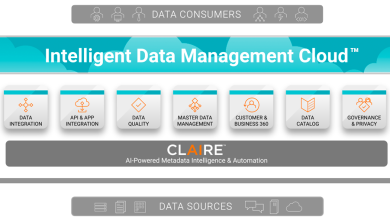
Attributed to: Grégoire Thomas, Head of Vertical and Specialised Partnerships, Americas, APAC and MEA, Alcatel-Lucent Enterprise

According to a study by the Organisation for Economic Cooperation and Development (OECD), 78% of Singapore students are most afraid of failure – the highest reported percentage compared to students from other countries. This fear of failure could lead students to avoid challenging situations and opportunities that are essential for learning and development.
Educational institutions play a crucial role in a students’ overall development. They provide a good learning environment that positively impacts students’ motivation, focus, and enthusiasm. In today’s rapidly evolving technology landscape, digital tools can enhance students’ learning, engagement, and administrative processes. A well-rounded education encompasses not only academic excellence, but also personal, social, and emotional development.
The pandemic also produced an uptake of devices and digital platforms due to the need for remote learning during quarantine. These new challenges actually presented new opportunities for digital transformation. Educational institutions can now pursue end-to-end digital strategies, fostering student success and institution growth through student-centric experiences. Remote learning platforms like Rainbow Classroom can further enhance this transformation by seamlessly integrating social learning with existing applications.
Here are some steps that educational institutions can take to develop a successful digital transformation strategy:
Supporting Student Success
Dropout and failure rates are an important criterion for schools. Hence, it is critical to identify students who are struggling, to give them the academic, emotional, and psychological support they need. Besides relying on the judgement of teachers, a more objective way in identifying which students need help is with data analytics. Implementing an analytics software that incorporates a baseline of successful students can identify those who are doing well, who can then be transferred to ‘gifted’ classes, as well as experiencing those who may be facing additional difficulties. In cases where it makes sense, nudge technologies, such as personalised text reminders and chatbots can then be used to encourage better academic performance.
In another example, GovTech Singapore stated that as part of the Smart Nation initiative, there will be the implementation of an AI-enabled learning companion. The companion will be able to support holistic learning by motivating students while he or she is doing a challenging task, encourage reflection on the learning experience, and recommend further learning activities. GovTech is seeing promise in using AI to help students. It can track students’ eye movement to detect engagement levels and identify parts of student’s problems so it can provide hints, resources or prompts for an alternative method.
Support flexible learning styles and locations
Before the pandemic, students would typically attend in-person classes at a school or university. However, after virtual and pre-recorded classes were introduced to adapt to quarantine measures; many have found it convenient and have since preferred to continue to take advantage of hybrid in-person and remote learning.
This was the case for Hongik University in South Korea, which needed to accommodate online lectures during the pandemic. The university worked with Alcatel-Lucent Enterprise to develop a reliable and stable network infrastructure that could manage large amounts of data traffic at fast transfer rates for students, improving their satisfaction with lectures and enabled the delivery of high-quality content and education programs from professors to enhance their students’ learning.
Today’s institutions’ digital transformation strategy must support technologies that allow schools to be as agile and responsive as possible to evolving student preferences and unexpected circumstances, such as severe weather events, and on campus emergencies.
We’re already seeing this happen in Singapore with the National Digital Literacy Programme (NDLP). Under the NDLP, all secondary school students will become owners of a personal learning device by 2028. This is to support home-based learning for students, while reaching their objectives of ensuring good teaching and learning outcomes in school.
Ensuring Safety and Security
When evaluating the best ways to protect individuals on campus, technologies such as panic buttons, safety hotlines, mass notification systems, and alarms monitored through a campus-wide safety dashboard are options. These technologies can be implemented indoors and outdoors, so everyone on campus always has fast and easy access to at least one alert mechanism.
For residents in Singapore, the utilisation of the SGSecure mobile application is heavily encouraged. A one-stop portal for members of the public to receive alerts during major emergencies as well as to provide information and seek assistance from the authorities. This is especially relevant for potential terrorist attacks or public order incidents that threaten the physical safety of the community and social harmony. The Police and Singapore Civil Defence Force (SCDF) are able to alert the application’s users of major emergencies like these.
As digital devices become more ubiquitous, it’s essential to develop a multi-dimensional cybersecurity plan that protects networks and data from cyberattacks from all angles. Additionally, the growth of personal and IoT devices on campus raises the risk of cyberattacks. In the face of these issues, the University of Lampung (UNILA), a public university in Indonesia, collaborated with ALE on implementing a zero-trust network security approach. This made their network infrastructure more resilient and high-performance, with an optimised problem-solving capability. This offered the university increased security from cyberattacks, in addition to improved visibility to agilely identify and respond to threats.
All in all, as educational institutions embark on their digital transformation strategy, it’s important to evaluate technologies that empower student success – along with providing a foundation for future growth and security. The steps outlined offer a holistic approach to creating a digital transformation strategy that sets the stage for a win/win for students and educational institutions alike. These steps also set a foundation in ensuring that important student needs are met in this digital age.




